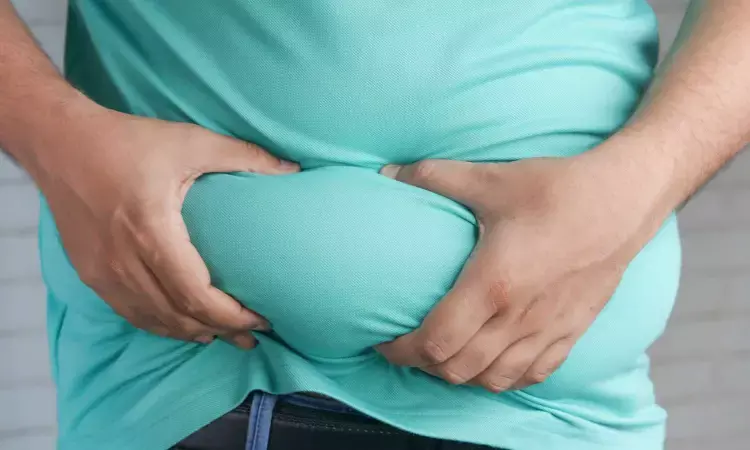- Home
- Medical news & Guidelines
- Anesthesiology
- Cardiology and CTVS
- Critical Care
- Dentistry
- Dermatology
- Diabetes and Endocrinology
- ENT
- Gastroenterology
- Medicine
- Nephrology
- Neurology
- Obstretics-Gynaecology
- Oncology
- Ophthalmology
- Orthopaedics
- Pediatrics-Neonatology
- Psychiatry
- Pulmonology
- Radiology
- Surgery
- Urology
- Laboratory Medicine
- Diet
- Nursing
- Paramedical
- Physiotherapy
- Health news
- Fact Check
- Bone Health Fact Check
- Brain Health Fact Check
- Cancer Related Fact Check
- Child Care Fact Check
- Dental and oral health fact check
- Diabetes and metabolic health fact check
- Diet and Nutrition Fact Check
- Eye and ENT Care Fact Check
- Fitness fact check
- Gut health fact check
- Heart health fact check
- Kidney health fact check
- Medical education fact check
- Men's health fact check
- Respiratory fact check
- Skin and hair care fact check
- Vaccine and Immunization fact check
- Women's health fact check
- AYUSH
- State News
- Andaman and Nicobar Islands
- Andhra Pradesh
- Arunachal Pradesh
- Assam
- Bihar
- Chandigarh
- Chattisgarh
- Dadra and Nagar Haveli
- Daman and Diu
- Delhi
- Goa
- Gujarat
- Haryana
- Himachal Pradesh
- Jammu & Kashmir
- Jharkhand
- Karnataka
- Kerala
- Ladakh
- Lakshadweep
- Madhya Pradesh
- Maharashtra
- Manipur
- Meghalaya
- Mizoram
- Nagaland
- Odisha
- Puducherry
- Punjab
- Rajasthan
- Sikkim
- Tamil Nadu
- Telangana
- Tripura
- Uttar Pradesh
- Uttrakhand
- West Bengal
- Medical Education
- Industry
Time-restricted eating and high-intensity interval training combo can help reduce belly fat

Researchers at Exercise, Cardiometabolic Health and Reproduction Research Group (EXCAR) at the Norwegian University of Science and Technology (NTNU) have found in a new study that a combination of high-intensity interval training and eating only within fixed times of the day could be the key to getting rid of dangerous belly fat
In the study, participants were allowed to eat whatever they wanted and as much as they wanted, but all their calorie intake had to take place within a ten-hour maximum time window.
The study included 131 women and lasted for seven weeks. The women were divided into three groups:
High-intensity interval training: Participants trained for 35 minutes three times each week. They completed two sessions of 4 x 4-minute interval training and one session of 10 x 1-minute segments. The participants trained at over 90 per cent of their maximum heart rate during the high-intensity interval run segments.
Combination group: Participants combined high-intensity interval training and time-restricted eating.
Control group: This group ate and exercised as they normally did.
The combination group ended up with the best results.
Lost more belly fat than other groups
"We found significantly reduced long-term blood sugar in the combination group participants. Their decrease in weight, fat mass and visceral fat was also almost twice as great as in the other two intervention groups. They also improved their oxygen uptake," says Moholdt.
Visceral fat is the fatty tissue that surrounds the internal organs in the abdominal cavity.
This fat is considered the most dangerous because the fat cells around the stomach can create proteins that trigger inflammation in the body. This can in turn increase the risk of obesity, diabetes, cardiovascular disease, cancer, depression and dementia.
Even if you can't target the specific parts of the body where you want to lose weight, such as with sit-ups, studies have shown that abdominal fat in particular can be reduced more by exercise than fat in other parts of the body can. The NTNU study confirms this.
Exercise + dieting = best outcome
"The risk of losing weight without exercising is that you'll lose a lot of muscle mass, which isn't advisable. Starting with both time-limited eating and high-intensity interval training can be a good idea if you want to quickly improve your health and reduce the risk of disease," says Moholdt.
All the participants who joined an exercise group were followed up by the researchers. They had to attend the training laboratories at NTNU and received guidance from the research team that led the training.
"A lot of the participants said that it really helped to have someone who held them accountable and that they had to report to. Now we're starting a study where they'll train on their own with only weekly digital follow-up," says Moholdt.
Reference:
Haganes, K.L., et al. (2022) Time-restricted eating and exercise training improve HbA1c and body composition in women with overweight/obesity: A randomized controlled trial. Cell Metabolism. doi.org/10.1016/j.cmet.2022.09.003.
Dr Kamal Kant Kohli-MBBS, DTCD- a chest specialist with more than 30 years of practice and a flair for writing clinical articles, Dr Kamal Kant Kohli joined Medical Dialogues as a Chief Editor of Medical News. Besides writing articles, as an editor, he proofreads and verifies all the medical content published on Medical Dialogues including those coming from journals, studies,medical conferences,guidelines etc. Email: drkohli@medicaldialogues.in. Contact no. 011-43720751


